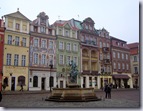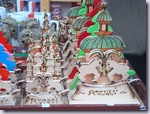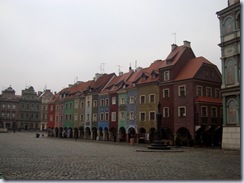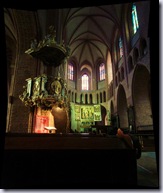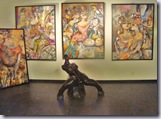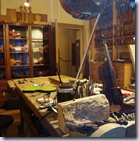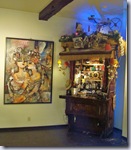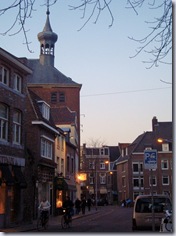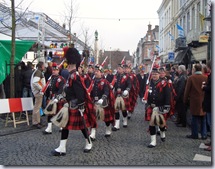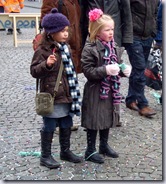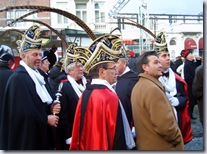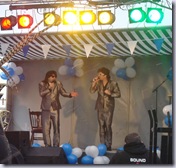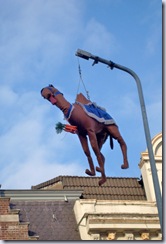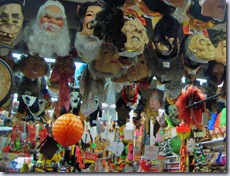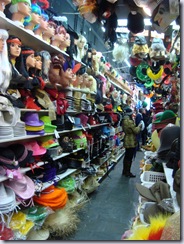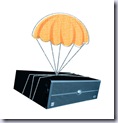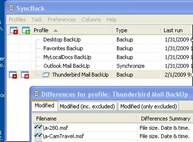The expat and the immigrant experience
 I listened to Tom Ashbrook’s interview with filmmaker Wayne Wang this morning: he created “The Joy Luck Club” and is now releasing two independent films mirroring the Chinese-American experience. I was surprised at all of the ways that this conversation resonated with me. Their immigrant experiences were a mirror to many of my expatriate experiences, and, in turn, I understand the nuances of their stories much better than I ever did before moving overseas.
I listened to Tom Ashbrook’s interview with filmmaker Wayne Wang this morning: he created “The Joy Luck Club” and is now releasing two independent films mirroring the Chinese-American experience. I was surprised at all of the ways that this conversation resonated with me. Their immigrant experiences were a mirror to many of my expatriate experiences, and, in turn, I understand the nuances of their stories much better than I ever did before moving overseas.
I understood immigration through the myth of the Melting Pot, as an extended process of assimilation. People learn the new language, come to understand the culture, raise their children to be part of their new communities as they abandon their traditional practices and extended families.
But the show helped me to realize that first-generation immigrants never fully assimilate: there is always a tension of merging their past and future lives, synthesizing or partitioning practices, making decisions about what to keep and what to discard. They always stand apart, outside their adopted culture, forever separated by formative experiences guiding their perceptions and actions.
My own experiences in the Netherlands are similar inside / outside experience. The people are welcoming and the culture is open to me, and I navigate it easily and feel comfortable in it. But I still am not a part of it, and never will be. While the obvious gap is language, a subtler part is missed social cues and shorthands, and there is always going to be a root difference from having a different heritage.
Ironically, I felt outside of American culture too, not as interested in sports and pop culture, more likely to embrace travel and reading, almost complementary to the in/out qualities here.
It’s an odd separation to have persist, because the gap between Americans and Dutch is much less than the gap between Americans and Chinese. Still, it exists. DeTocqueville was the first to describe it, but I think that we all note the many differences and wonder how they came to be. We were a common people four generations ago, and America began as an extension of the intellectual, cultural, and social traditions practiced on the Continent for centuries. The US still identifies strongly with its European heritage. Even so, we are different: less class conscious, but more material; living on a larger scale, yet willing to change perhaps too fast.
I think that a lot of that came from the westward expansion: as settlers broke out of the New England communities they encountered the vast prairies and mountains, unlimited open space and resources so unlike home. And it changed them, led to a more ambitious and individualistic culture and economy.
Listening to the Chinese-Americans tell their stories, I realized that the reality must be more complex. Immigrants come from unique subcultures, each bringing different perspectives and traditions. Which communities would they identify with; which traditions would shape their actions in new societies? Life in a new land is not lived in isolation, it is a stage play watched by new neighbors and by distant relatives. How do immigrants reconcile disparate views of what their ‘right’ behavior should be? Children are not rooted in the prior culture and don’t struggle with the cultural blend that their parents see. Their totally different experiences must create gaps and estrangement as parent’s conflicts seem irrelevant and outdated?
The conversation ranged over all of these questions, and I needed to pause several times to think about my own answers. I know that I do carry my American practices among the Dutch, despite people complementing me on how well I fit in. I suspect that while I take on some local guidance, I always wear it more lightly than I (or they)might think.
I struggle with the provincialism of people in the US who argue for me to join their ideal communities, but I’m sure that I am equally incomprehensible to them. Last month, one confessed to feeling sorry for me, away from the big house, friends, and familiar things. It set me back: I never felt that way about the living here.
I like being the parent or uncle who lives differently in distant lands and hosts exotic holidays. But that distance is also a source of disengagement, perhaps headed ultimately towards alienation? If the shared experiences are rare, and the stories lose their relevance and resonance, do I also lose engagement as perceived by friends and family?
Barak Obama famously consulted Goodwin’s “Team of Rivals” to draw on lessons of past administrations to shape his own. Similarly, I think that there are ideas in immigrant stories that that are relevant to making sense of our own expatriate experiences.
Labels: Other literature, Podcasts

